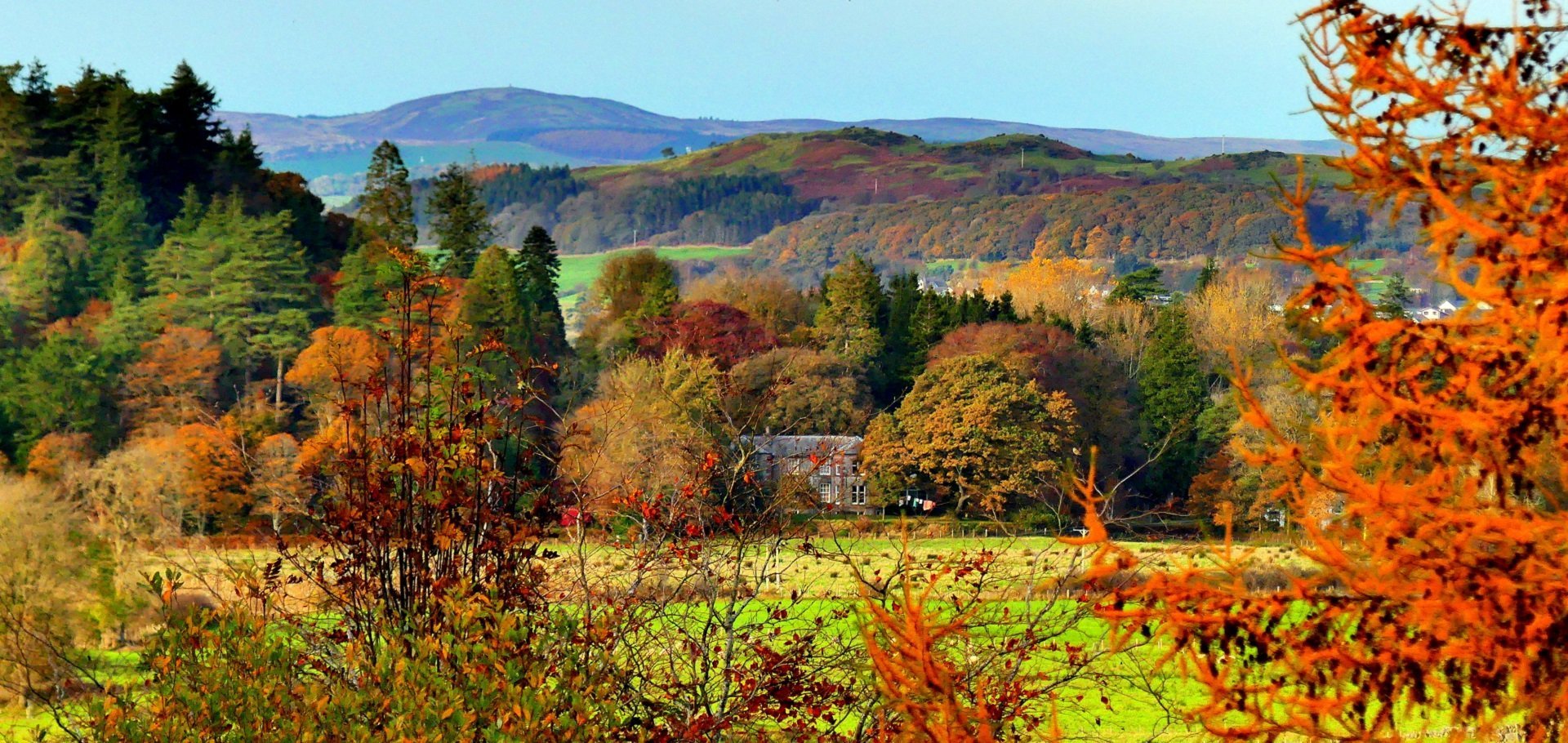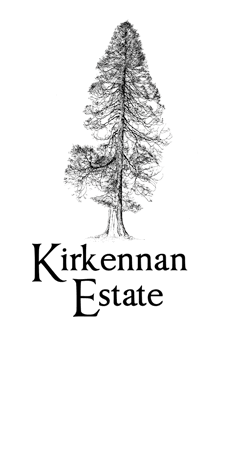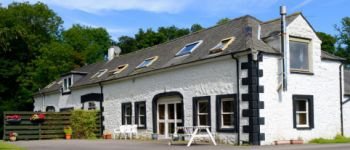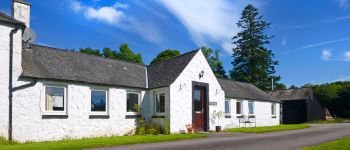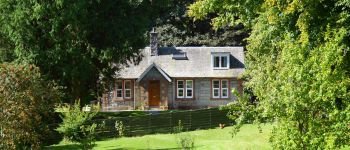I was a little bit surprised when I was invited by Zero Waste Scotland to give a talk on how we have worked to reduce our carbon footprint at Kirkennan Estate – when you live in old buildings there is always so much more you can do and usually I focus on that rather than how far we have come. But when I stand back and reflect on our journey over the last 7 years I realise we have done a considerable amount. Always keen to save energy of any type, I have converted my presentation into my latest blog...
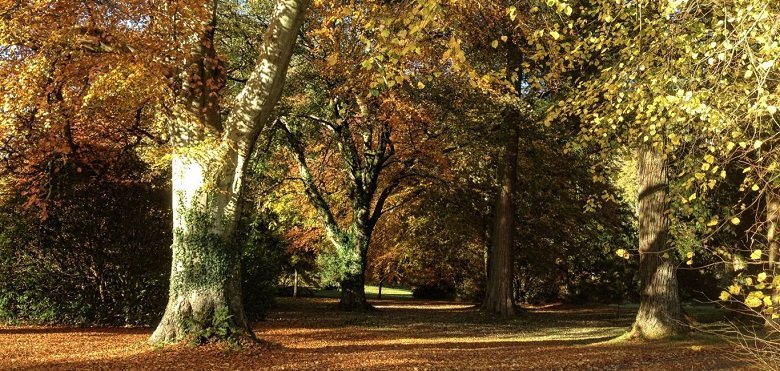
My husband and I moved to Kirkennan Estate in June 2013 attracted by firstly the mature trees and secondly the fact that we weren’t expecting to have a large enough pension to live on. The idea was to invest the proceeds of our London house in a place that would generate an income that would keep pace with inflation and thus be comfortable into old age.
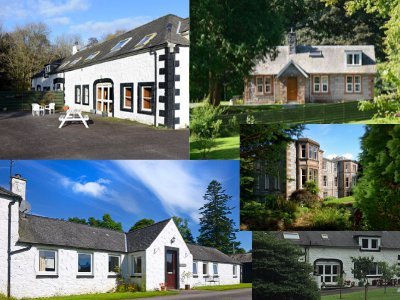
Kirkennan is a compact Estate in South West Scotland. It comprises a main house where we live, 3 cottages which we thought would be suitable for self-catering and one cottage with a lifetime tenant set within 74 acres of gardens, woodland and fields alongside the river Urr. We thought the cottages ideal for holiday cottages being rather quaint and attractively located. We weren’t initially quite so keen on the main house which appeared monstrous, but we have grown to love it.
Liking the trees, the location and having three cottages was pretty much the extent of our business plan.
Early days
The photo shows our first night at Kirkennan. We didn't yet have the keys so we set up a tent on the front lawn. Shortly after taking this photo we got the keys and the removal vans arrived. We were very excited. But before we had even managed to step into the house we got our first visitor. They are a friendly lot in Dumfries and Galloway…
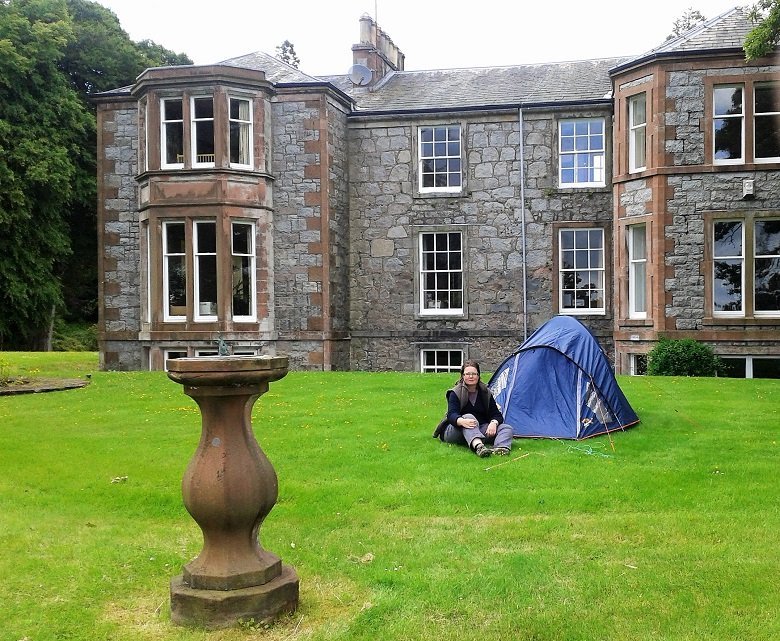
Well that is true, we have been made very welcome, but this visitor was on a mission.
He was the salesman for the company that had delivered heating oil to the previous owner and was most excited that after more than a year empty Kirkennan was going to be occupied again.
At this point we started to realise some of the implications of moving into a large, old house. The previous owner had had a regular top up contract with the oil company and there was not a single thermostat on any of the 50 radiators in the house. We were a potentially a significant customer.
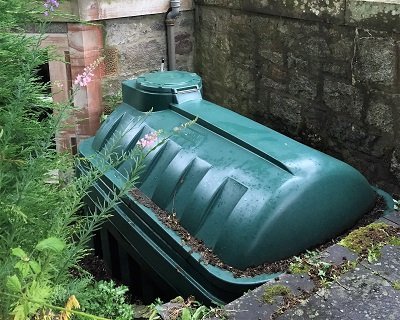
Unfortunately for the oil company, worried about our budget and the climate crisis, we had other ideas. Through that first winter we would put on the oil powered central heating for an hour the first Sunday of the month whether we needed it or not - just to keep it working. It was a real treat to huddle around a radiator for that one hour. To my ears, newly released from the woolly hat I lived in the rest of the time, including in bed, the boiler was so large it sounded like an airplane taking off and I would visualise the burning of £20 notes. Our penny pinching paid off - we have never refilled that tank, but just used up some of the oil that was already in it.
Motivations for working to reduce our carbon footprint
As well as the cold house we lived in we also had 3 stone built holiday cottages to run that had old heating systems – one on oil and the two others used a mix of old style underfloor heating (electric elements set in concrete rather than water pipes), storage heaters and open fires.
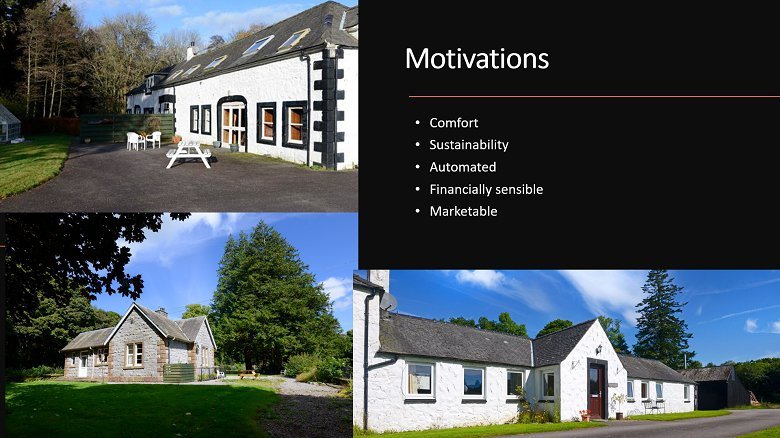
We had and have a number of motivations for taking steps to improve heating efficiency and reduce our carbon footprint at Kirkennan. And these motivations have impacted on the choices we have made:
- First of all we do want our guests and ourselves to be comfortable
- We also want to be more sustainable. Living in a large house isn’t a particularly good start, but the more I reflect on it the more I consider tackling the climate crisis to be the most urgent issue of our times and we all need to take what action we can.
- Heating and hot water for the holiday cottages has to be automated and allow us to go away – we don’t mind putting in labour and time but comfort has to be available at the touch of a button for guests, including when we are away.
- It has to make financial sense. Furthermore in order to allow us to do as much as possible we are prioritising things that have a faster payback so that we can recover the investment to take subsequent steps.
- We want to attract the Green Tourist and educate our guests about the climate crisis. I haven’t as yet found a very good way to reach the Green Tourism market and I don’t think I can trace any initial bookings to us being Green, but I do think it encourages repeat visitors.
The first steps we took to reduce our carbon footprint were to
• Install thermostatic valves on all radiators in the house and the holiday cottages so we could turn the temperature down in rooms that were not being used.
• Install a district heating biomass boiler to serve 2 holiday cottages, 1 cottage with a lifetime tenant and the house. We chose to go for wood chipped on site.
• Plant a 5000 native tree woodland to offset the trees we burn in the biomass.
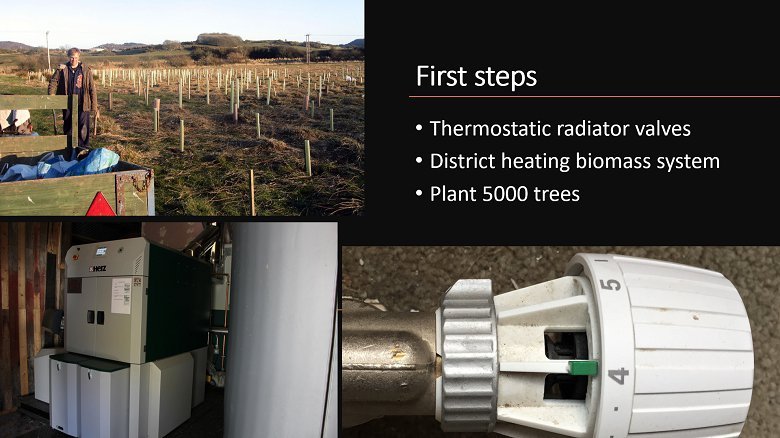
Why?
A biomass boiler was the only sustainable and affordable way we could find to heat the House.
Sustainable because it uses waste wood from a local sawmill. We deliberately chose not to go for pellets which are an internationally traded commodity and, due to transport miles, potentially have a significant carbon footprint.
Affordable because of the renewable heat incentive (RHI) available at the time. The RHI allowed us to both get a mortgage to pay for the considerable investment required, and enabled us to pay the mortgage back. The mortgage will end at about the same time as the RHI payments.
Lessons
There is a lot to say about the biomass which probably deserves a blog on its own. A couple of points:
- The RHI was both a benefit and a challenge. It meant we could finance something that would have been impossible without it but it also attracted the cowboy installers so care was needed to weed them out. We immediately got rid of any supplier who, without measuring up, suggested we go for the maximum possible size boiler to maximise the RHI payment – and there were a few.
- The quotes we had were overly optimistic in terms of the energy efficiency of the system particularly when only being used at the house to provide hot water in the summer as the house is some distance from the boiler, and in their payback calculations they didn’t factor in electricity, moving logs, chipping logs, or maintenance. Furthermore they didn’t advise us that to ensure logs had the appropriate moisture content they ideally needed to be stored on site for a year before use. We did visit a couple of people who had systems already installed but these points were not highlighted then either.
Overall we are happy with the system and still feel it is the most appropriate way to provide heating and hot water for the house and stable block of 3 cottages. It doesn’t supply The Lodge as it is too far away from the other buildings. For the time being this remained on oil central heating.
Zero Waste Scotland Advice: Easy wins
In 2018 I arranged with Zero Waste Scotland (then called Resource Efficient Scotland) for a free visit from a consultant to advise us on how we could make our holiday cottages more sustainable. We immediately implemented the easy suggestions for which we were able to get an interest free loan with 30% cash back.
These included:
- Changing all lights to LED. (We also did the house, which contains our office, laundry and ironing room, financed by ourselves). LED light bulbs use less than 20% of the electricity of a conventional lightbulb. We also installed motion sensitive outdoor lights in both The Mews and Woodsedge as we were finding some guests would turn them on on arrival then forget to turn them off again.
- Replacing an old energy inefficient fridge/freezer and washing machine in the central laundrywith a larger more efficient one rated A+++ which also saves on water use.
- Adding underfloor insulation in The Lodge.
We have noticed a reduction in electricity use as a result of these steps.
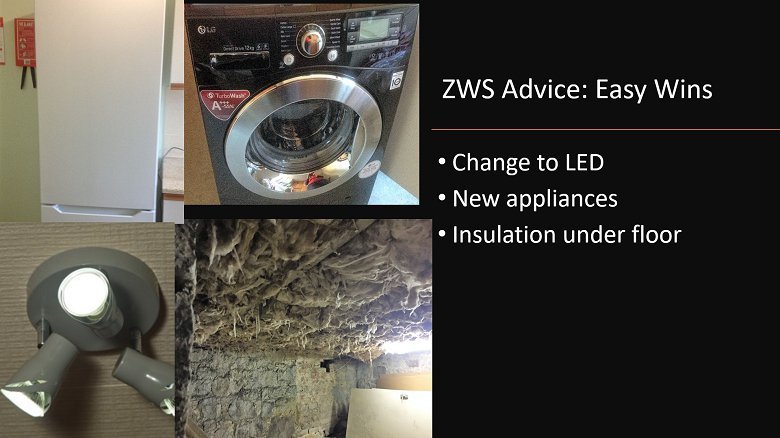
Further Zero Waste Scotland Support: Solar PV and air source heat pump
The consultant from Zero Waste Scotland had suggested we look at some sort of heat pump linked to solar PV for the one cottage that remained on oil for central heating and hot water as it was too far from the biomass boiler to connect to that system. He also recommended we might consider installing additional solar PV to feed into the biomass and for the house. We got further support from ZWS to look at this in more detail and then, when I found commissioning challenging they also supported us with a consultant to help us interpret the quotes. Without this support I am not sure we would have managed to move forwards.
The consultant suggested an Air Source Heat Pump connected to solar PV was the way to go for our particular situation. We have now installed 3 sets of solar PV:
- One connected with an ASHP to provide heat and hot water in the The Lodge. It felt like a bit of a milestone early this year when we were able to stop buying oil for heating.
- One connected to the biomass: we hope to link this to a zapi Electric Vehicle charger so that guests or ourselves can use excess to charge their cars (when our diesel car failed its MOT earlier this year we replaced it with a second hand Electric Vehicle). However this plan has had to go on hold temporarily as all our savings are being used to survive the COVID 19 lockdown.
- One connected to the house with an i-boost so that any excess is used to heat hot water. The idea is that we hope to be able to stop the biomass circulating to the house in the summer to increase its efficiency.
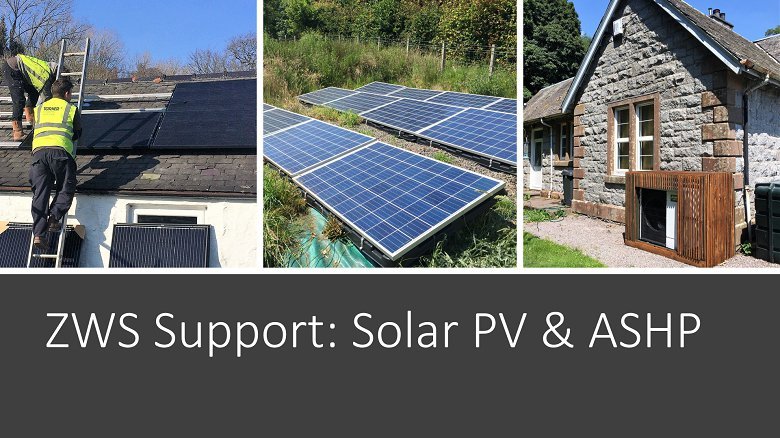
Challenges
Initially I tried to get the same company to quote for both the solar PV and the ASHP but could only find one company prepared to do this giving me no way to compare the cost of the quote. We ended up staging the work with the Solar PV put in a year before the ASHP and used an i-boost in the meantime.
One location did not have roof space of the right orientation so we located the panels in an adjacent field. This works well but had more than anticipated additional costs: Full planning permission was required (about 10% of the total installation cost), levelling, trenchwork, and fencing.
The ASHP only went in shortly before lockdown so we haven’t really had a chance to evaluate it.
Joining Green Tourism
We joined Green Tourism in 2018 when we were rated Bronze. They gave us a range of advice, not all relevant to the topic of this blog. What they did suggest, which we have done, is to:
- Move our electricity suppliers to renewable sources
- Use their online carbon footprint calculator which we intend to repeat on an annual basis.
- Get better at communicating what we have done – one reason why I agreed to give the talk for ZWS and am writing this blog
We were re-assessed in March 2019 and were delighted to be awarded a Gold Green Tourism rating.
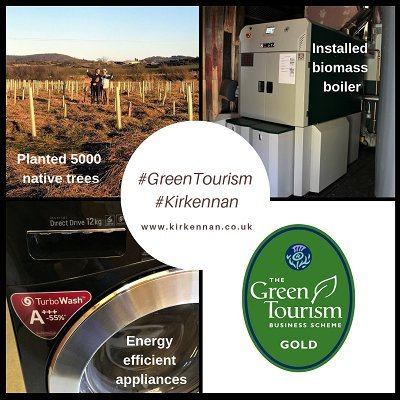
Insulation and draught proofing
As my presentation was to be followed by an expert talking about insulation I finished by saying what we had done about to improve insulation and draught proofing in the cottages:
- We replaced open fires in the holiday cottages with woodburning stoves which are both much more efficient and prevent draughts. We chose DEFRA approved 81% efficient stoves. Open fires achieve only 15% efficiency and furthermore even when the fire is not being used the open chimney makes the central heating of the cottage less efficient. Modern efficient stoves are estimated to reduce particulate emissions by 90% compared to an open fire and are virtually carbon neutral when used correctly with dry wood.
- We checked the thickness of insulation in the roofs of the holiday cottages and got a friend with a heat sensitive camera to check for heat leakage in The Lodge - we also saw a tawny owl whilst using the cameras which was far more exciting!
- We replaced double glazing in The Mews that had lost its seal.
- We added underfloor insulation as recommended by ZWS.
- Whenever we are carrying out other work we add insulation where possible
- When putting in new carpets we have added a thick layer of underlay
- When fixing wood panelling in The Mews we added insulation behind it,
- When adding new curtains in the double bedroom at Woodsedge we used blanket lining.
- We replaced old felt insulation on pipework in The Lodge with modern insulation.
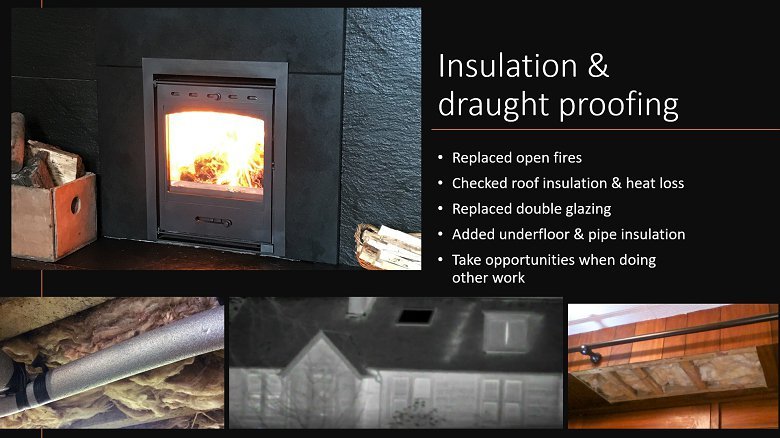
We would like to do much more on insulation and I have requested further support from Zero Waste Scotland to identify the best way to go about this. I will share our progress in due course.
You can find out more about how we work to be sustainable on our website. If you would like to support us in our journey to becoming more eco-friendly please consider booking a holiday at one of our holiday cottages or passing on our details to someone you think might be interested.
With thanks
Jennifer Chapman
